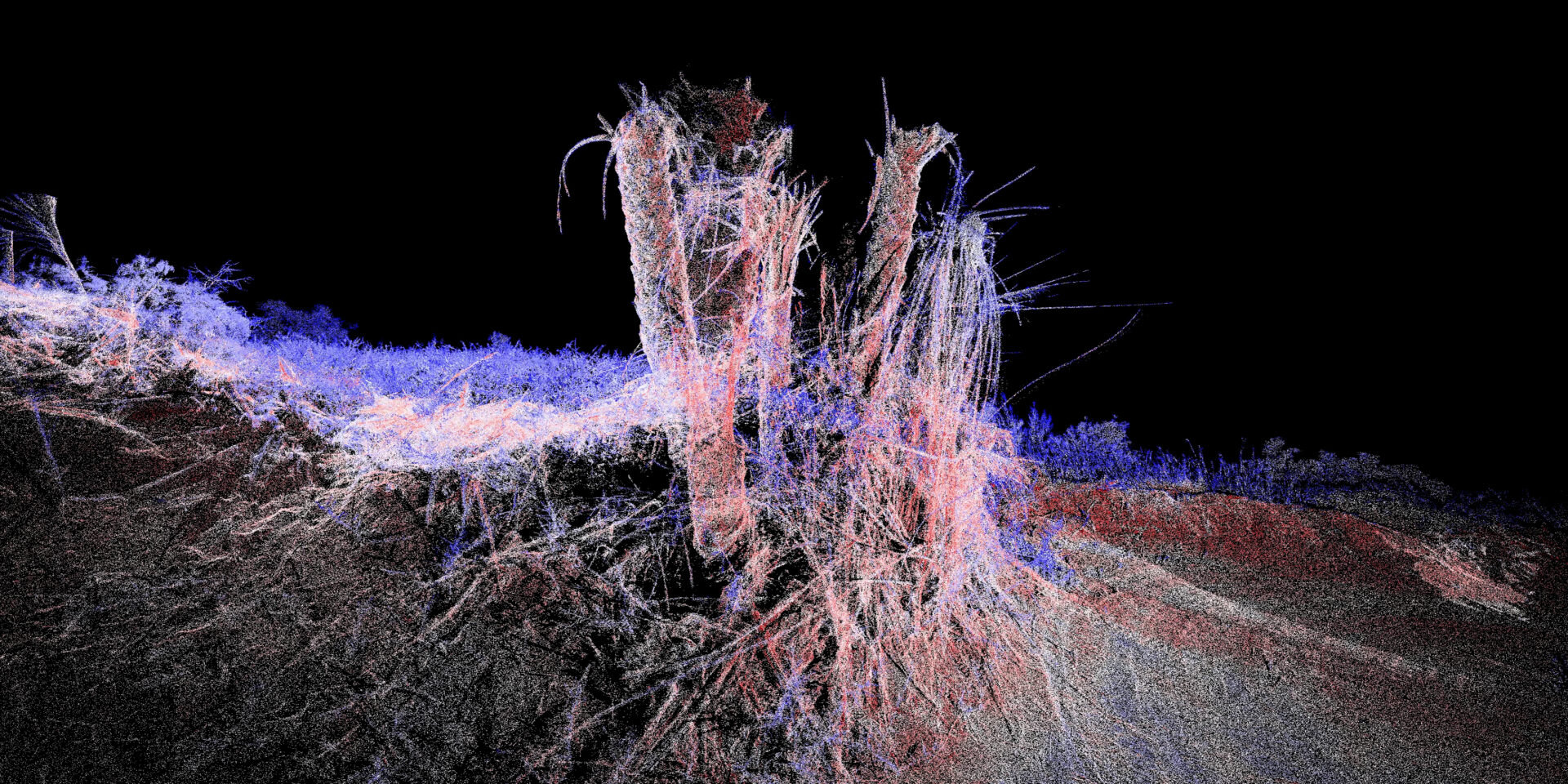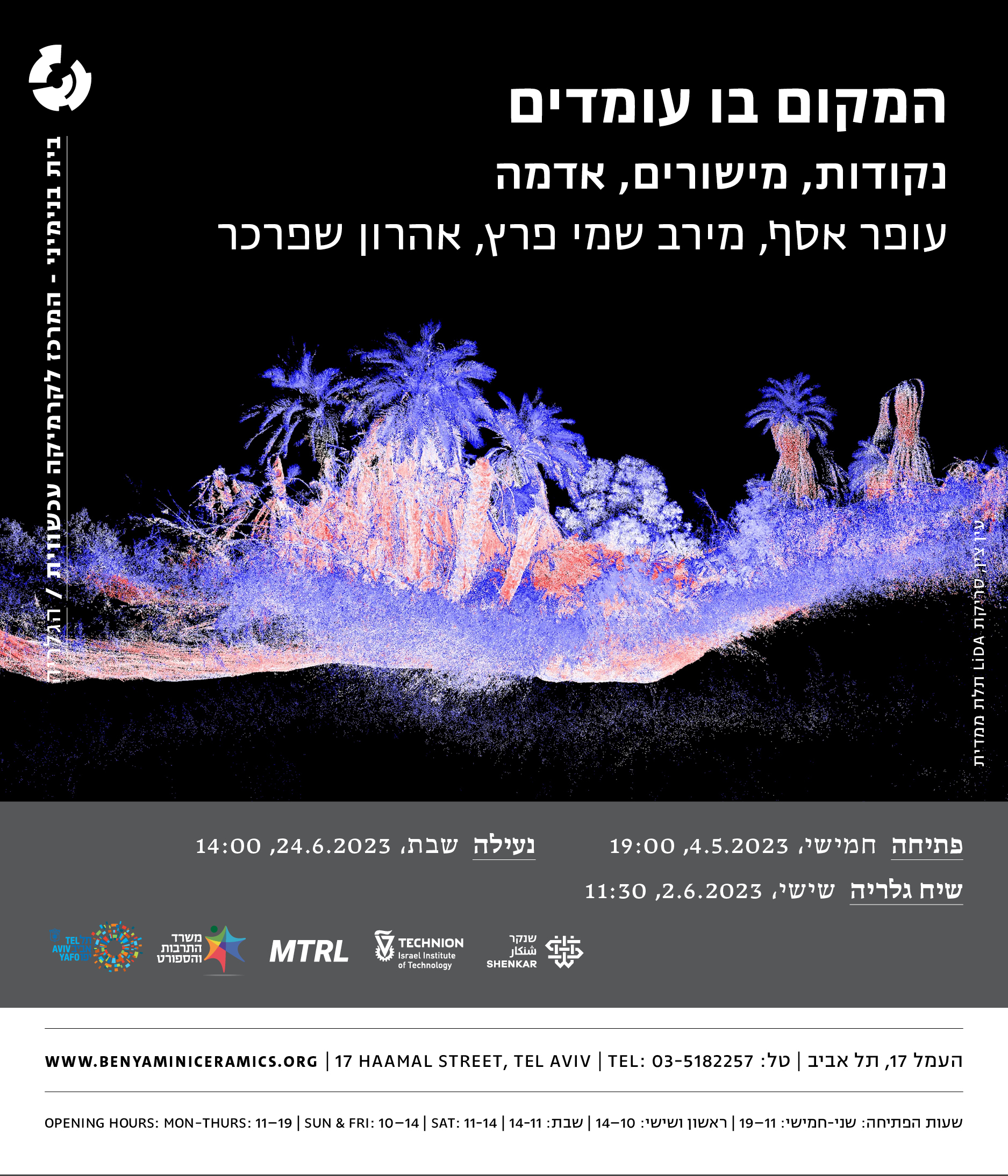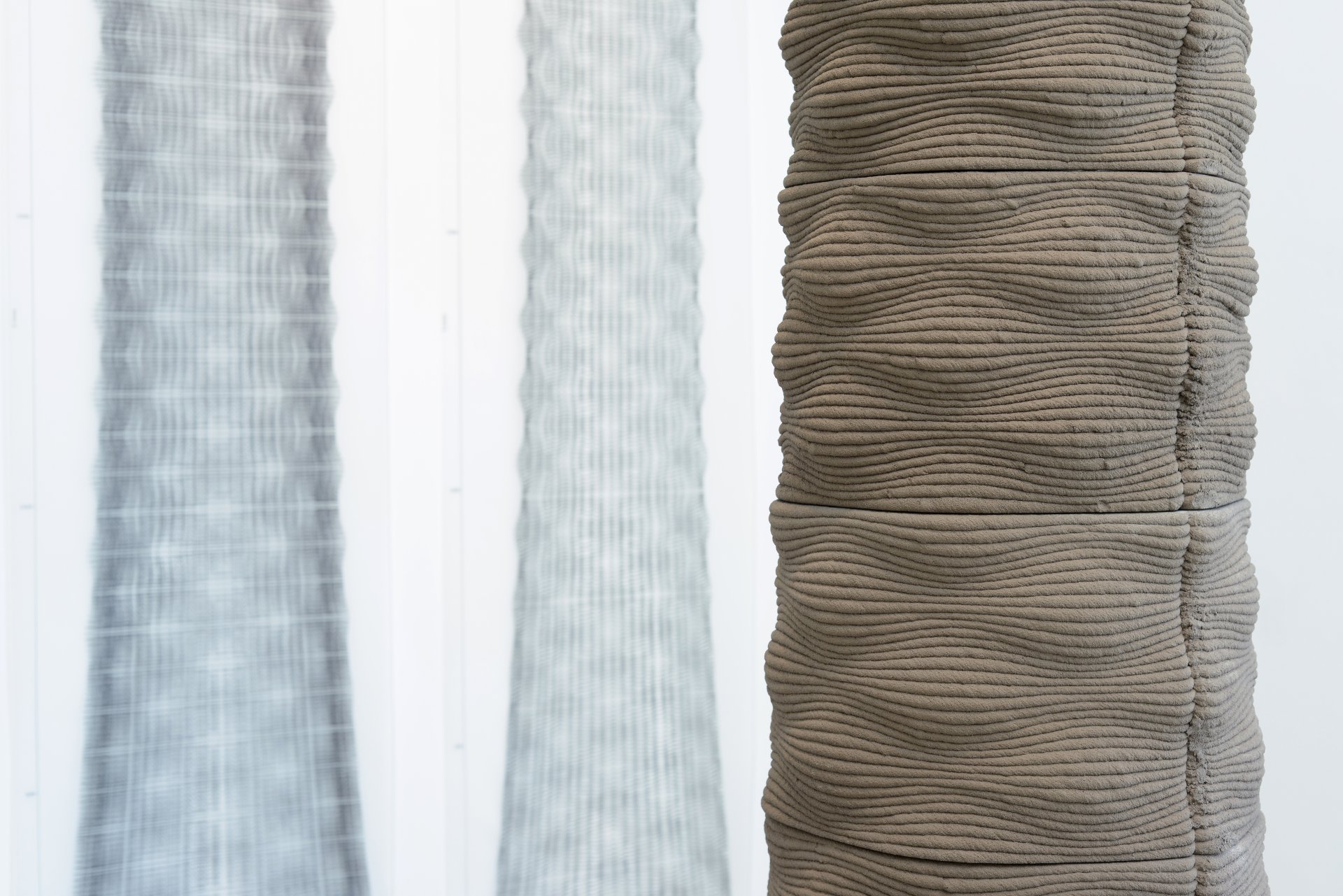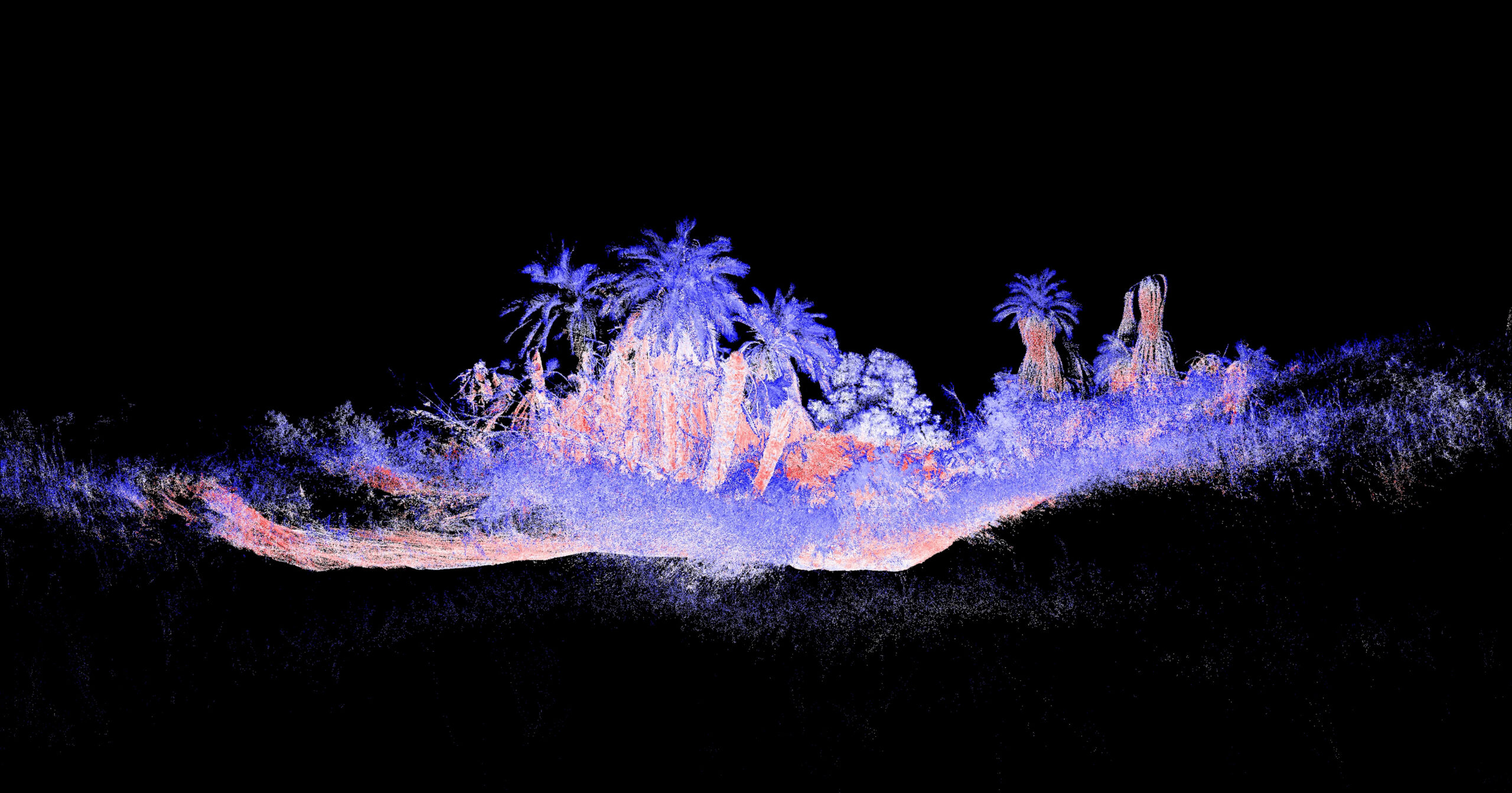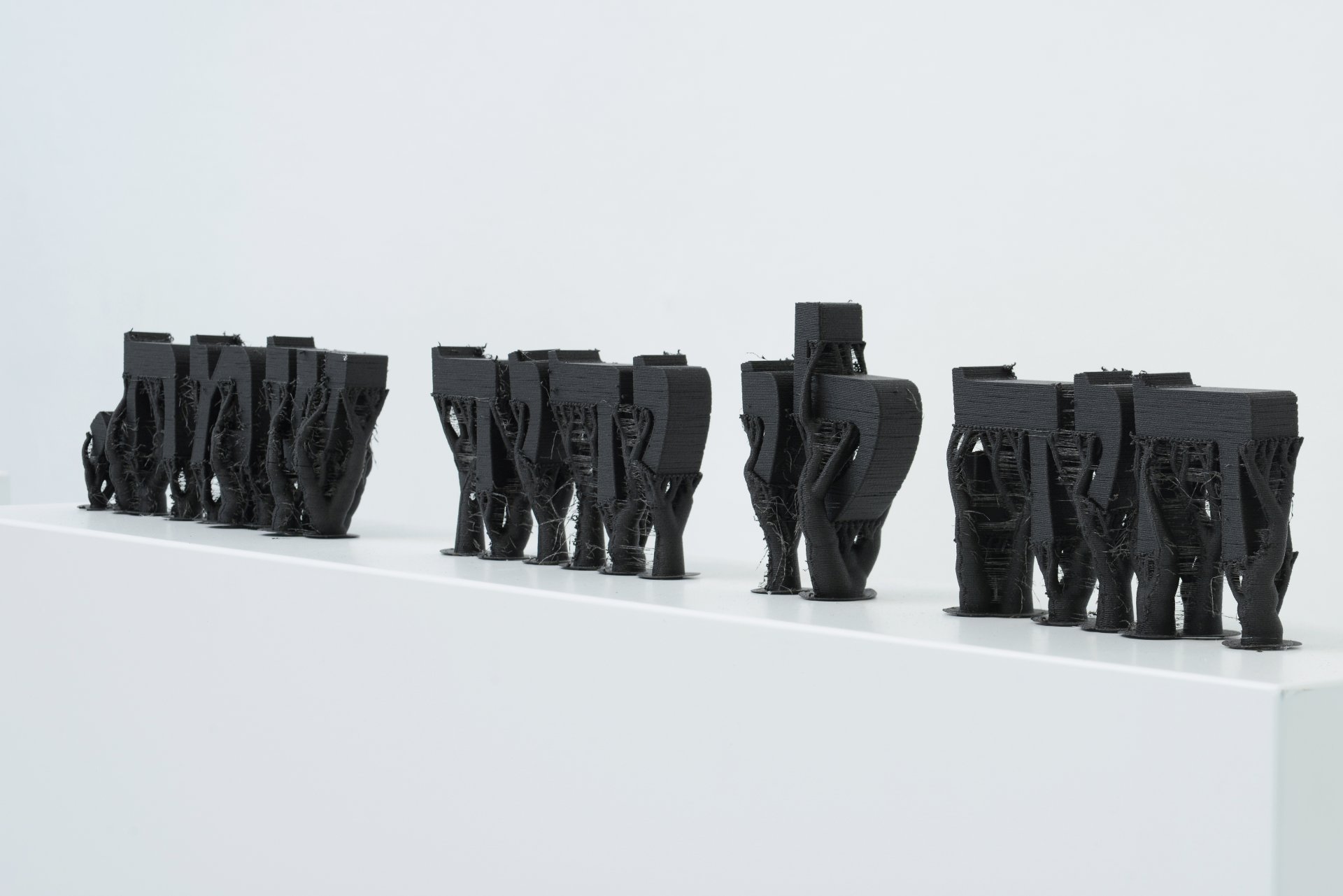Into Trees- Points, Planes, Soil. / Ofer Asaf, Merav Shemi Perez, Aaron Sprecher
Opening: Thursday, 4/5/23, 19:00
Gallery talk at Benyamini center: Friday, 2/6/23, 11:30
Closing: Saturday, 24/6/23, 14:00
Into Trees invites visitors to look at trees and to recall – via advanced representation and fabrication technologies – their special status in ancient local traditions, and the complex relationship here between trees and people in the past. The exhibited works highlight the tension between the environmental threats facing trees today – the result of human activity – and the promise of technological restoration and preservation.
The inhabitants of the ancient Middle East worshiped trees. Originating in societies that were poor in vegetation and forests, the presence of a massive tree was a focal point for religious and cultural rituals. The trees were seen as mediators with the world of spirits and as a source of fertility, and were accorded the status of gods on earth. Archaeological evidence for the centrality of trees in these cultures can be found in the form of tree-like figurines, stylized tree engravings, symbols and pictographs.
Today, however, animistic ways of worship – attributing agency to natural phenomena – are conceived as primal and archaic. Nevertheless, contemporary anthropological research indicates that elements of worship and animism can also be found in the awe we experience when encountering new technologies. The concept of “techno-animism” that has emerged in recent years describes the growing affective connection between humans and technology and the belief that technological objects possess agency. The exhibited works examine the possibility of combining ancient local animistic traditions with advanced technologies in an effort to reassess the connection between people, technology and trees.
The three works in the exhibition encourage the visitor to look and reflect on the special relationship with trees that characterized our region in the past. At the entrance to the gallery space, the Ein Zin (October 23, 2022) video is screened. The video is based on 3D scans of dying palm trees at oases along the Zin Stream. By navigating through a point cloud that represents the trees, we almost feel their tangible presence– until the camera focuses in on the palm trees, and they turn into the digital dust of points in space. The vast information collected in the scans freezes in time a snapshot of the palm trees, which are dying as a result of mineral mining in the Zin streambed.
Alongside the video stands a Tree Figure manufactured with architectural-scale 3D printing technology, using a mixture of local clay, cement and sand. The wood figure was printed with a robotic arm that enables a high level of control in applying the material. This control facilitates the creation of organic and sensual forms, suggesting the surface and structure of the palm tree. In this way, the work is a contemporary technological interpretation of ancient wood figurines that were common in our region.
The third work in the exhibition, I Had a Friend Who Died, is a relief printed with polymer-based material that incorporates a high percentage of sawdust. The relief presents the opening line of a poem by Aharon Shabtai that was the inspiration and starting point for the entire exhibition. In a simple and matter-of-fact tone, the poem conveys a unique ambiance of humans and trees, suggesting the possibility of a relationship of intimacy and even worship.
Together, the works offer the viewer a complex aesthetic experience that simultaneously embodies destruction by technology and the promise of restoration. The space the works create is a sort of advanced technological reserve that fails to preserve; it is the place in which we stand, in an entangled relationship – people, technology, and trees.
Translator: Ira Moscowitz

